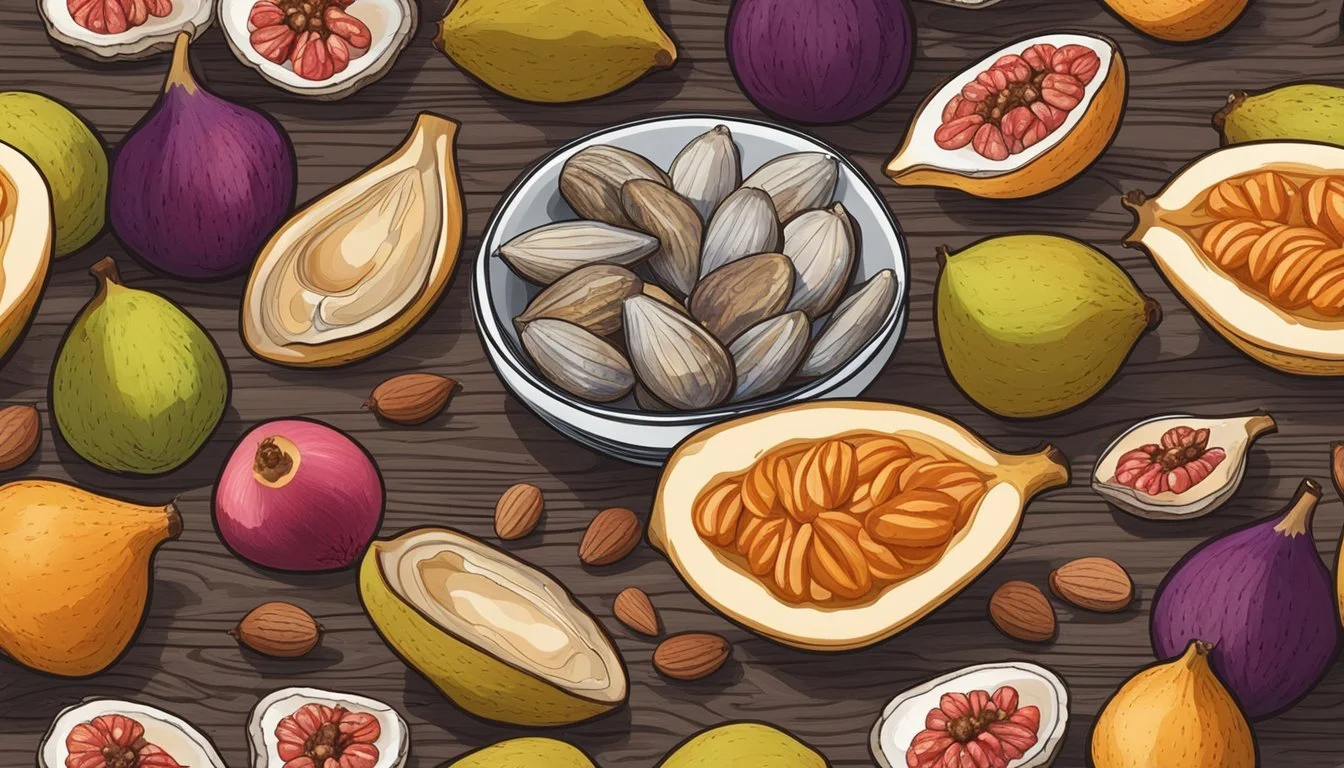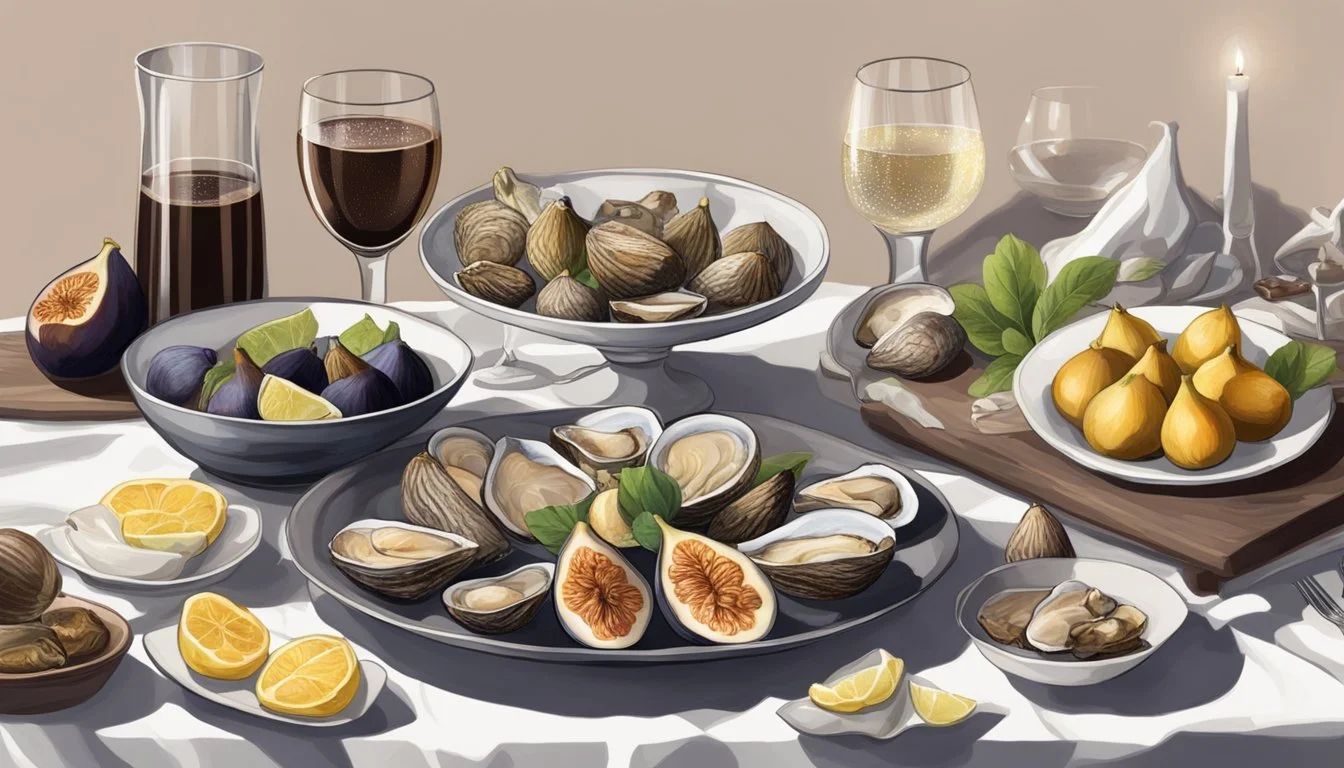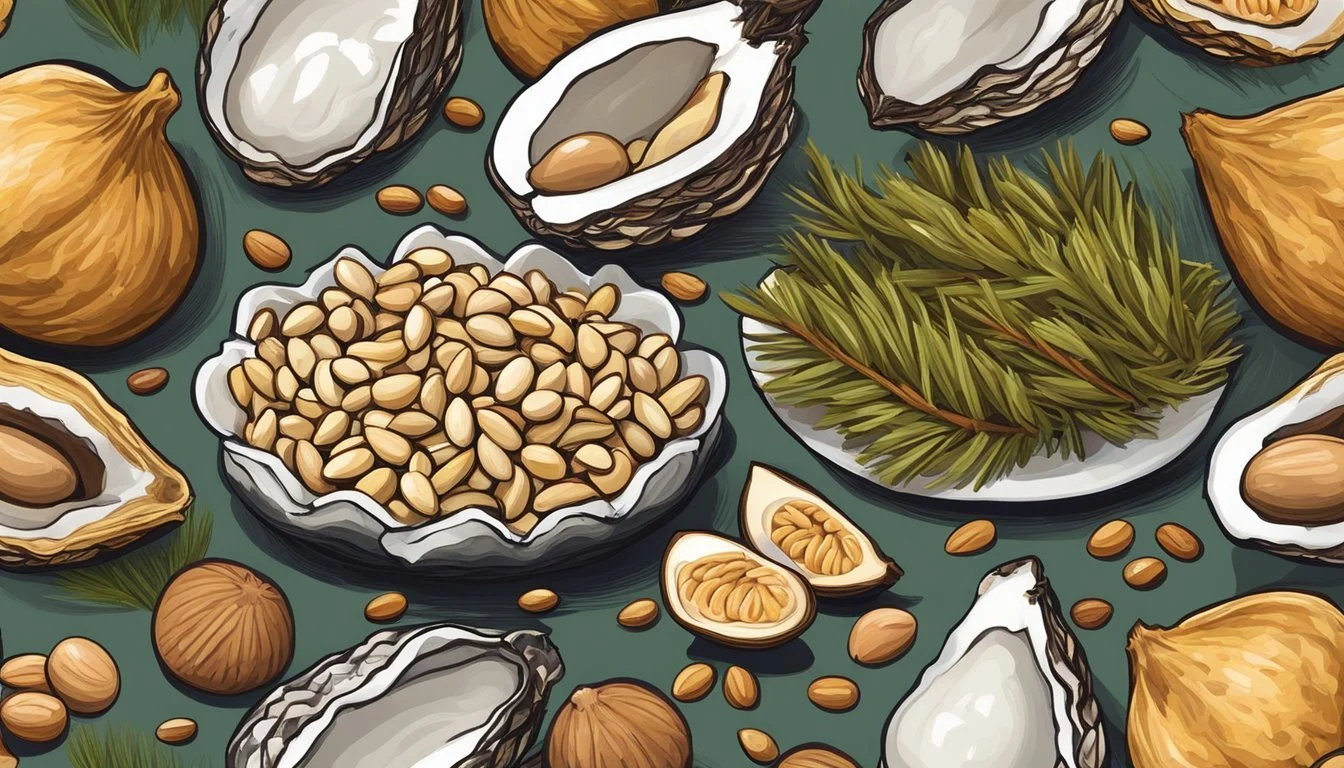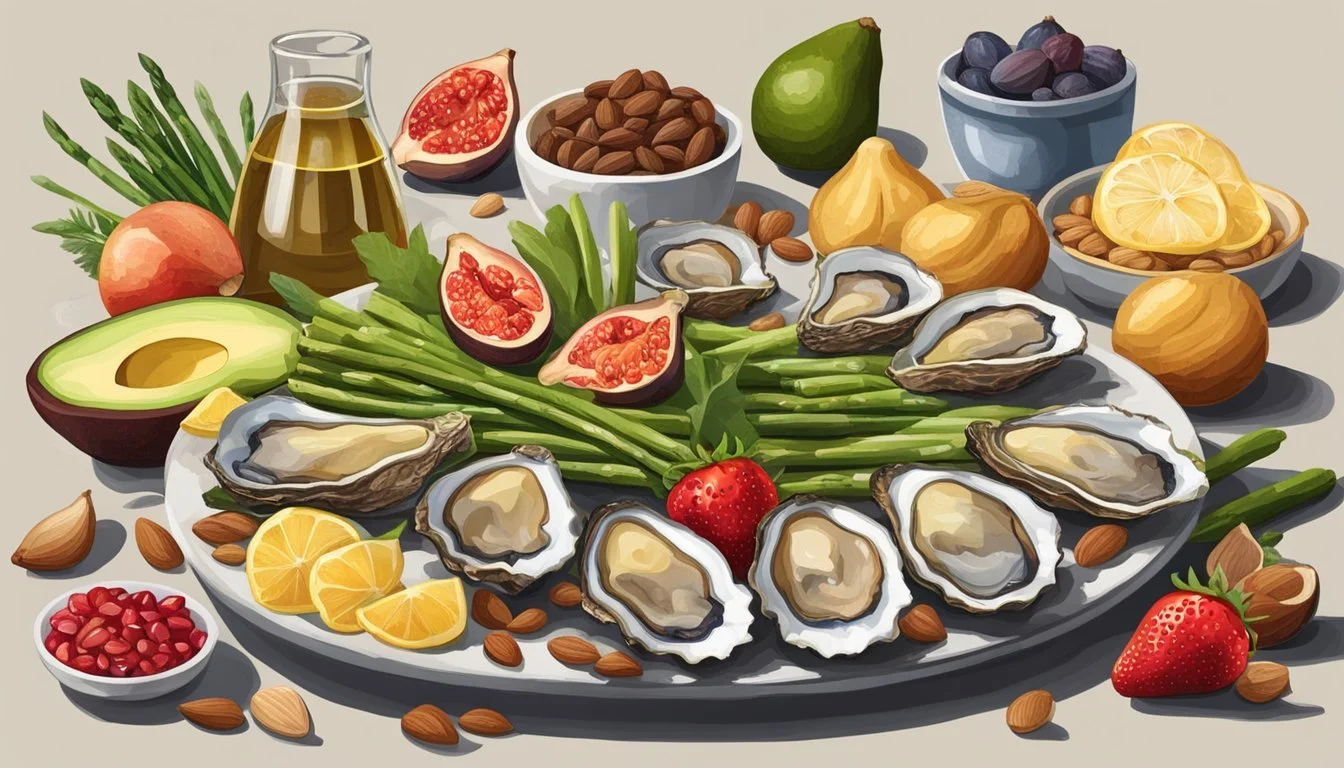10 Normal Foods That Were Once Considered Aphrodisiacs
A Historical Insight
Throughout history, various foods have been associated with enhancing romantic desire and performance. While modern science has debunked many of these beliefs, exploring the lore behind aphrodisiac foods offers a fascinating glimpse into cultural practices and values.
What makes certain foods gain a reputation for stimulating love and attraction? From spices with a kick to ordinary vegetables, the explanations range from their nutritional profile to metaphorical connections. This exploration of aphrodisiac foods reveals how humanity often turns to nature in its quest for passion and intimacy.
1) Honey
Honey has long been associated with romance and love. In ancient times, it was often given to newlyweds to increase their chances of conceiving. This practice led to the term "honeymoon."
The ancient Egyptians, Greeks, and Romans believed honey could boost libido. They considered it a symbol of fertility and used it in various love potions.
In Ayurveda, honey has been used to enhance sexual vigor. It is thought to increase stamina and energy, contributing to a more active love life.
Honey contains boron, which may help regulate hormones. It also provides a quick source of energy and can reduce stress, which are factors that can affect sexual health.
The natural sweetness of honey makes it a popular ingredient in many romantic recipes. Its use in desserts and drinks adds a touch of intimacy.
Throughout history, honey has maintained its reputation as a natural aphrodisiac, making it a staple in various cultures' traditions and practices related to love and romance.
2) Avocado
Avocado, known for its creamy texture and rich flavor, was once heralded as an aphrodisiac by ancient civilizations. The Aztecs referred to the avocado tree as "ahuacatl," which translates to "testicle tree," due to the fruit's shape and the appearance of growing in pairs. This association likely contributed to its reputation as an enhancer of sexual desire.
The fruit is packed with nutrients. Rich in vitamin E, potassium, and healthy fats, avocados support overall health and vitality. Vitamin E, in particular, is known for its role in maintaining youthful skin and energy levels, which may indirectly influence sexual health.
Another reason avocados were considered aphrodisiacs is their potential to improve blood flow. The fruit contains monounsaturated fats, which can help lower bad cholesterol. Improved cholesterol levels can enhance cardiovascular health, aiding in better blood flow, crucial for sexual function.
Today, while the claims surrounding avocados as aphrodisiacs are more myth than science, their nutritional benefits are well-proven. They provide a healthy addition to any diet, reinforcing the idea that foods good for general health can also contribute to sexual well-being.
Incorporating avocados into meals, from salads to smoothies, is a delicious and nutritious way to enjoy their benefits. Though modern science doesn't label avocados as aphrodisiacs, the historical beliefs around them add an intriguing layer to their rich heritage.
3) Bananas
Bananas have historically been linked to aphrodisiac qualities due to their rich nutrient profile. They are packed with vitamins and minerals that are beneficial for sexual health.
Containing high levels of potassium and vitamin B6, bananas aid in hormone production. This includes sex hormones like testosterone, which can enhance libido.
Bananas are also a good source of energy. Consuming them can help boost stamina, which is essential for prolonged physical activity, including sexual activity.
The phallic shape of bananas may have contributed to their historical reputation as aphrodisiacs. Ancient cultures often interpreted the appearance of foods as signs of their potential benefits.
Bananas should not be seen as a miracle food, but their nutritional benefits can contribute positively to overall health, including aspects related to sexual performance and vitality.
4) Chocolate
Chocolate has long been associated with romance and allure. In ancient Mesoamerica, civilizations like the Maya and Aztecs believed cacao was a divine gift. They used it in rituals and ceremonies, linking it to various aspects of life and love.
The Aztecs, particularly, held chocolate in high regard. Emperor Montezuma is said to have consumed large quantities of cacao to enhance his romantic encounters. The chocolate drink they made from cacao beans was thought to possess powerful aphrodisiac properties.
When Spanish explorers brought cacao back to Europe in the 16th century, it quickly gained popularity. European nobility and elite adopted it, not just for its taste but also for its rumored benefits in love and passion. The mystique of chocolate as an aphrodisiac persisted through the ages.
Modern science has explored these claims, focusing on compounds like phenylethylamine and serotonin. These chemicals, naturally found in chocolate, can influence mood and sensation, contributing to its reputation. While the effects might not be as dramatic as historical beliefs suggested, chocolate still holds a place in romantic traditions today.
5) Almonds
Almonds have a long history as a symbol of fertility and were often used in wedding ceremonies. In ancient cultures, almonds were believed to enhance passion and increase energy.
These nuts are rich in essential fatty acids, which are crucial for hormone production. The high vitamin E content in almonds also contributes to maintaining reproductive health.
Modern interpretations suggest that the nutrients in almonds can improve overall energy levels, which might indirectly benefit sexual health. They are also known to support heart health, which is vital for maintaining proper blood flow.
Incorporating almonds into a diet can be beneficial for both nutrition and tradition. While contemporary science doesn't confirm almonds as a direct aphrodisiac, their role in a balanced diet is undeniable.
6) Asparagus
Asparagus has a long history of being regarded as an aphrodisiac. This belief dates back to ancient times. Various cultures valued asparagus for its supposed ability to stimulate desire and enhance romantic encounters.
Part of this reputation stems from its nutritional content. Asparagus is rich in vitamins A, C, E, and B6, folate, and potassium. These nutrients support healthy hormonal balance and overall well-being.
Additionally, asparagus has a suggestive shape, which may have contributed to its association with sexual potency. Visual symbolism often plays a role in how foods are perceived.
French bridegrooms in the 19th century were served three courses of asparagus at their pre-wedding dinners. This practice was believed to boost their libido on the wedding night.
Today, while asparagus is enjoyed for its taste and health benefits, its reputation as an aphrodisiac continues as a charming historical footnote. Its delicate, earthy flavor complements a variety of dishes, making it a favorite in many kitchens.
7) Garlic
Garlic has a long history of being considered an aphrodisiac. Ancient cultures believed in its ability to enhance passion and desire.
It was thought to stimulate the body by improving circulation. This increase in blood flow was believed to contribute to heightened arousal.
Garlic contains allicin, which has been linked to increased blood flow. Some historical texts mention that garlic was consumed before romantic encounters.
Despite its strong odor, garlic was prized for its supposed love-enhancing properties. In medieval Europe, it was sometimes used in love potions.
Today, garlic is more commonly valued for its health benefits. Its reputation as an aphrodisiac, however, remains a part of historical folklore.
8) Figs
Figs have a long history as a symbol of fertility and love. They were believed to be aphrodisiacs due to their appearance and sweet, luscious taste. In ancient Greece, figs were associated with fertility rituals and were often given as offerings to deities.
Rich in vitamins and minerals, figs are a nutritious fruit. They contain fiber, potassium, and antioxidants which contribute to overall health. The high nutritional value of figs was thought to enhance physical vitality and libido.
The texture and shape of figs also played a role in their reputation as an aphrodisiac. Their soft, succulent flesh resembles parts of human anatomy, which ancient cultures found provocative.
Figs contain amino acids that can improve blood flow, indirectly supporting sexual health. Their natural sweetness and distinctive flavor add to their allure, making them a popular choice in various cuisines for centuries.
Ancient texts and folklore often mention figs in the context of enhancing passion and desire. Despite modern skepticism, figs remain a symbolic food associated with love and fertility in many cultures. Their historical reputation as an aphrodisiac persists, blending myth with nutritional science.
9) Pine Nuts
Pine nuts have been regarded as aphrodisiacs for centuries due to their high zinc content. Zinc is known to play a role in supporting a healthy sex drive, making these small, oily seeds prized in various cultures.
In addition to zinc, pine nuts are rich in antioxidants, healthy fats, and other essential nutrients. These elements contribute to overall wellness, which can indirectly enhance libido and sexual health.
The effort needed to harvest pine nuts from pine cones has also added to their mystique. This labor-intensive process historically elevated their value and allure as a rare, desirable food.
Pine nuts are versatile in culinary uses. They can be added to dishes like pesto, salads, and various desserts, providing a nutritious boost and a subtle, unique flavor.
10) Vanilla
Vanilla, derived from the orchids of the genus Vanilla, has a long history of being seen as an aphrodisiac. Native to Central America, vanilla was first cultivated by the Totonac people of present-day Mexico, who believed in its energizing properties.
When Spanish explorers brought vanilla to Europe, it quickly gained a reputation for its pleasant aroma and supposed aphrodisiac qualities. Its popularity spread, and it became a favored ingredient in various dishes and perfumes.
In the 18th and 19th centuries, vanilla was often prescribed by physicians as a treatment for male impotency. The sweet scent and rich flavor were thought to stimulate the senses and arouse romantic desires.
Modern science suggests that vanilla contains compounds that can elevate mood and create a sense of well-being. While its status as a potent aphrodisiac remains more cultural than scientific, vanilla remains cherished for its aromatic and taste-enhancing properties.
Understanding Aphrodisiacs
Aphrodisiacs have intrigued people for centuries, often due to their supposed ability to enhance sexual desire. This interest spans various historical periods and cultures, highlighting both their historical context and cultural significance.
Historical Context
Aphrodisiacs date back to ancient civilizations. Ancient Greeks believed foods like honey and figs had love-inducing properties. Honey was linked to fertility and known as "nectar of Aphrodite," the goddess of love.
In medieval Europe, foods such as mustard and pomegranates were thought to boost virility. Mustard, for instance, was believed to stimulate sexual desire due to its heat, which is a result of compounds called isothiocyanates released when the seeds are crushed.
The use of aphrodisiacs continued into the Renaissance. Foods like truffles and certain herbs were consumed for their supposed sexual benefits. The historical fascination with aphrodisiacs highlights the interplay between food, belief systems, and societal views on sexuality.
Cultural Significance
Different cultures have unique aphrodisiacs. In India, the Ayurvedic tradition considers foods like ginseng and saffron as sexual enhancers, believed to balance bodily energies. These foods are often integrated into spiritual practices and rituals.
In East Asia, particularly in China and Japan, ingredients such as ginseng and sea cucumber have long been valued for boosting libido. Ginseng, in particular, is used for its potential to increase stamina and sexual vitality.
Western societies have also embraced foods as aphrodisiacs. Chocolate, for instance, is linked to love and romance, often gifted during Valentine's Day. The incorporation of these foods into cultural practices underscores their significance beyond mere culinary delight.
Scientific Perspectives on Aphrodisiacs
Aphrodisiacs have fascinated humans for centuries, but modern research has provided more clarity on their effectiveness and the myths surrounding them.
Modern Research
Modern research investigates the biochemical properties of foods once thought to be aphrodisiacs. Studies often evaluate whether certain compounds in these foods can actually influence libido or physical performance. For example, chocolate contains phenylethylamine and serotonin, chemicals associated with mood elevation. Oysters are rich in zinc, essential for testosterone production. Mustard’s heat is attributed to isothiocyanates, which may promote a sensation of warmth.
Researchers employ rigorous methods such as double-blind studies and placebo controls. They analyze not only the psychological impact but also the physiological effects. The findings often highlight the complexities, showing minimal direct impact on libido.
Effectiveness and Myths
The effectiveness of aphrodisiacs is a mixed bag. While some foods contain nutrients that are crucial for sexual health, the actual aphrodisiac effect is often attributed to the placebo effect. For instance, honey and banana, with their vitamins and minerals, support general health but lack concrete evidence linking them to enhanced sexual desire. Edible Bird’s Nest, though nutritionally valuable, lacks scientific backing as an aphrodisiac.
Many historical beliefs are now considered myths. Rhino horn, once prized, is composed mainly of keratin, offering no proven benefits for libido and posing severe threats to wildlife. Popular culture often exaggerates these foods' effectiveness, leading to misinformed perceptions.
Scientific scrutiny reveals that while certain foods contribute to sexual health through general wellness, their reputation as potent aphrodisiacs remains largely unsubstantiated.












